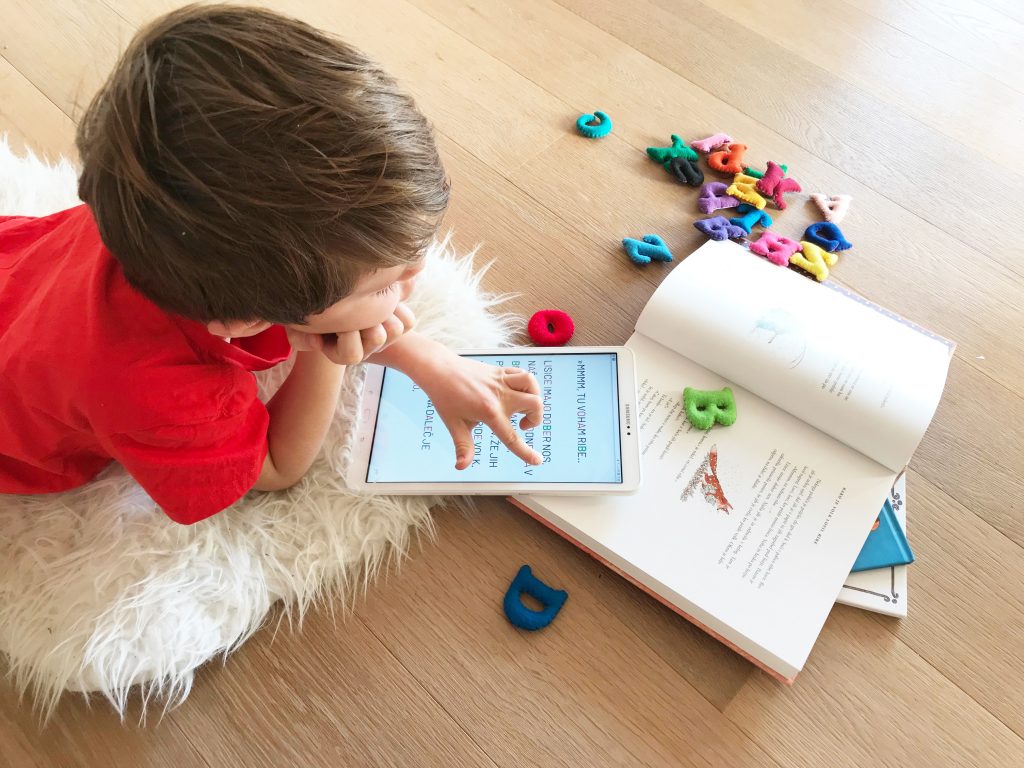Both creativity and innovation enable companies to better capitalize marketplace opportunities and provide competitive advantages. Ursula Lavrenčič from startup Hopalai, last years’ finalist of Slovenian Start-up of the year and PODIM Challenge, in this interview speaks about opportunities and advantages of integrating cultural and creative sector and entrepreneurship. Last year they presented their startup at PODIM together with the Centre for creativity, which is very active in this field and connects and supports the activities as well as development of Slovenia’s cultural and creative sector and at the same time encourages interdisciplinary and intersectional cooperation and development of projects, which are commerically viable, increase added value and are aimed at addressing specific social issues, facilitating social progress and welfare.
Can you briefly introduce your company and how have you connected creativity with entrepreneurship in your company?
»Our company has been on the market for a little bit more than a year. We have developed the Kobi app, which is designed for children with dyslexia and other reading difficulties as an aid by learning to read. Last year, we launched the app on the market and achieved very good responses that exceeded our expectations. Later on last year we launched MVP and now we have a very good prototype as well as we know very well what the product should look like.
The team consists of four founders, two of them are designers. I am an architect, a designer by profession and I look at everthing through the optics of design. Creativity is a part of our company in all aspects. We do not have established paths and we innovate everything we do. Somehow we live and work with this way of thinking, that you want to be different from others all the time, that you want to solve things differently. Having designers in the company can be seen in all aspects of the company’s operations, in our communication with customers, marketing, development,…«

Last year you qualified for the finals of the Slovenian Start-up of the year competition and also presented your startup at PODIM together with the Centre for Creativity. How would you assess the benefits of both projects, Slovenian Start-up of the Year and PODIM, for your company and companies in the region?
»I believe that last year we managed to make it to the finals of the selection of the Slovenian Start-up of the year and the PODIM Challenge, to which applied 700 companies from the region, mainly because we succeeded very well to communicate the project before launching. Before we launched the product on the market, we were already well recognized by the professional public.
PODIM has a very special meaning for us and is like our birthday, because our team met at PODIM. Two years ago, I presented my entrepreneurial idea at the PODIM conference, where Mateja Lavrič from Kolektor introduced me to Marko and Andrej, and that’s how our story began. PODIM also gave us a lot of knowledge, including what needs to be done to be interesting to investors. This year PODIM will be different and I am already looking forward to it. Certainly, the Slovenian Start-up of the year also brings positive aspects to the finalists, especially in the long term, because you have already appeared somewhere as a startup, you already have a reference when you apply for tenders…«

How do you see the potential of connecting the cultural and creative sector for the development of entrepreneurship?
»I see great opportunities and advantages for both, the creative sector and entrepreneurship. There are quite a few options that are not yet being exploited. But on the other hand, these two mindsets hardly work together. Just as creative people need an entrepreneurial mindset, I believe entrepreneurship needs creative people. A lot depends on the creative, the sale of the product, the image created by the creatives is very important…. Designers are also accustomed to working in a fluid environment where parameters are difficult to grasp. We have methodologies for successful operation in situations where there are too many variables to be able to manage them with classical engineering approaches. Certainly, connecting the two worlds brings the development of new ideas, new ways of solving challenges, and therefore, better solutions and results.«
Can you share with companies any concrete advice on how to incorporate innovation and creativity into the company and how to use them to achieve better results in companies?
»By providing mixed teams. Within a company, you can always ensure that there will be different types of people in the team. I think it is very good that there is at least one creative person in each team, because they look and think differently from entrepreneurs and this opens up opportunities for improvements, new things, work processes, innovative approaches.«



